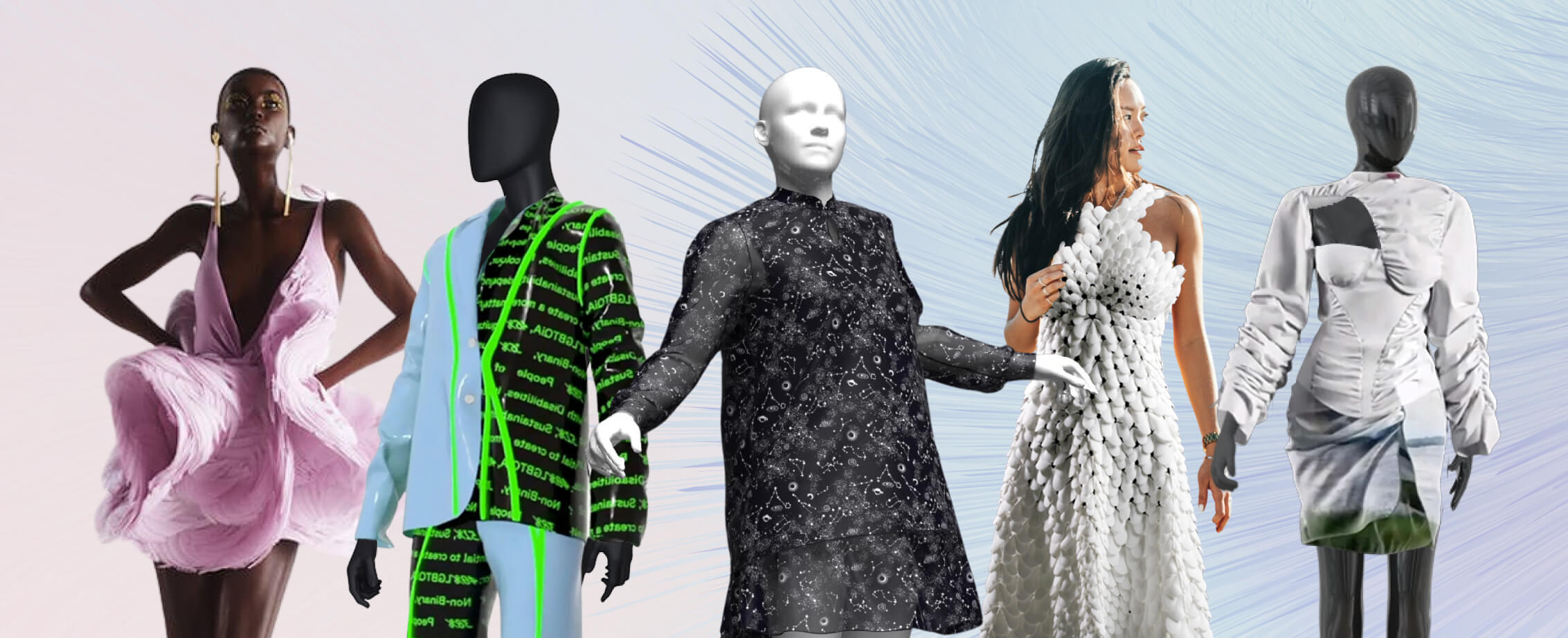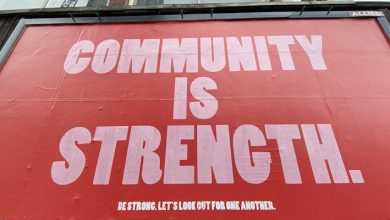The Future of NFTs in Fashion

- Exploring the intersection of NFTs and fashion
- How NFTs are revolutionizing the fashion industry
- The potential impact of NFTs on the future of fashion
- Challenges and opportunities for NFTs in the fashion world
- Innovative ways designers are incorporating NFTs into their collections
- What the future holds for NFTs in the realm of fashion
Exploring the intersection of NFTs and fashion
NFTs have been making waves in the fashion industry, offering a new way for brands to engage with consumers and create unique digital assets. The intersection of NFTs and fashion opens up a world of possibilities for designers, artists, and fashion enthusiasts alike.
One of the most exciting aspects of NFTs in fashion is the ability to create limited edition digital clothing and accessories that can be bought, sold, and traded on the blockchain. This not only adds a new level of exclusivity to fashion items but also allows for greater creativity and experimentation in design.
Brands are also exploring the use of NFTs to authenticate products and combat counterfeiting. By creating digital certificates of authenticity that are stored on the blockchain, brands can provide customers with peace of mind knowing that they are purchasing genuine products.
Furthermore, NFTs offer a new way for fashion brands to connect with their audience and build a community around their products. By releasing NFTs as part of special collections or collaborations, brands can engage with collectors and fans in a more meaningful way.
Overall, the intersection of NFTs and fashion represents an exciting new frontier for the industry. As brands continue to experiment with this technology, we can expect to see even more innovative and creative uses of NFTs in the world of fashion.
How NFTs are revolutionizing the fashion industry
NFTs are making waves in the fashion industry, revolutionizing the way we perceive and interact with digital assets. These non-fungible tokens have opened up a world of possibilities for designers, brands, and consumers alike. By tokenizing digital fashion items, such as virtual clothing and accessories, NFTs are enabling creators to establish ownership and scarcity in the digital realm.
One of the key advantages of NFTs in fashion is the ability to authenticate and verify the originality of digital designs. This helps combat issues like plagiarism and counterfeiting, providing a level of trust and transparency that was previously difficult to achieve in the digital space. Additionally, NFTs allow for unique customization and personalization options, giving consumers the opportunity to express their individuality in new and exciting ways.
Furthermore, NFTs are creating new revenue streams for fashion brands and designers through the sale of digital collectibles and limited-edition virtual items. This not only opens up new markets and opportunities for growth but also challenges traditional notions of ownership and value in the fashion industry. As NFTs continue to gain traction, we can expect to see even more innovative collaborations and creative projects emerge in the intersection of fashion and blockchain technology.
The potential impact of NFTs on the future of fashion
NFTs have the potential to revolutionize the fashion industry in ways we have never seen before. These digital assets can provide a new level of authenticity and uniqueness to clothing and accessories, allowing designers to create limited edition pieces that cannot be replicated. This exclusivity can drive up demand and value for these items, making them highly sought after by fashion enthusiasts and collectors alike.
Furthermore, NFTs can also streamline the supply chain process by providing a secure and transparent way to track the origin and ownership of each item. This can help combat issues such as counterfeiting and intellectual property theft, ensuring that designers receive proper credit and compensation for their work. Additionally, NFTs can open up new revenue streams for fashion brands through royalties on secondary sales, allowing them to continue profiting from their creations long after the initial purchase.
As the fashion industry continues to embrace digital innovation, NFTs have the potential to become a staple in the way we buy, sell, and collect clothing and accessories. By leveraging blockchain technology, designers can create a new level of trust and authenticity in their products, while also tapping into a growing market of tech-savvy consumers who are eager to explore the intersection of fashion and technology. The future of NFTs in fashion is bright, and we can expect to see even more exciting developments in the years to come.
Challenges and opportunities for NFTs in the fashion world
There are both challenges and opportunities for NFTs in the fashion world. One of the main challenges is the issue of copyright and intellectual property rights. As NFTs are essentially digital assets, there is a risk of unauthorized duplication and distribution of fashion designs. This can lead to a loss of exclusivity and value for both the designers and the buyers. However, this challenge also presents an opportunity for the fashion industry to explore new ways of protecting and monetizing their creations through blockchain technology.
Another challenge is the environmental impact of NFTs. The process of minting and trading NFTs consumes a significant amount of energy, which can contribute to carbon emissions and environmental degradation. Fashion brands need to consider the sustainability aspect of NFTs and find ways to minimize their carbon footprint while still leveraging the benefits of this technology.
On the other hand, there are several opportunities for NFTs in the fashion world. One of the most significant opportunities is the ability to create unique and limited-edition digital fashion items that can be bought, sold, and traded on the blockchain. This opens up a whole new market for collectors and fashion enthusiasts who are looking for exclusive and rare pieces to add to their digital wardrobe.
Additionally, NFTs offer a new way for fashion brands to engage with their audience and build a community around their designs. By minting NFTs of their collections, brands can create a sense of ownership and belonging among their customers, leading to increased brand loyalty and customer retention. This direct connection with consumers can also provide valuable feedback and insights for future design decisions.
Innovative ways designers are incorporating NFTs into their collections
Designers are finding innovative ways to incorporate NFTs into their collections, revolutionizing the fashion industry. By leveraging blockchain technology, they are able to create unique digital assets that can be bought, sold, and traded securely.
One popular method is to create NFTs of digital fashion pieces, allowing customers to own exclusive virtual items that can be worn in the digital world. This opens up a whole new market for fashion enthusiasts who want to express themselves in the metaverse.
Another approach is to use NFTs as proof of authenticity for physical fashion items. By attaching a digital certificate of ownership to a garment, designers can ensure that customers are purchasing genuine products. This helps combat counterfeiting and builds trust with consumers.
Some designers are even collaborating with digital artists to create NFT collections that combine fashion and art in unique ways. These limited-edition pieces are highly sought after by collectors, driving up demand and creating a new revenue stream for designers.
Overall, the integration of NFTs into fashion collections is reshaping the industry and opening up new possibilities for creativity and innovation. As designers continue to explore the potential of blockchain technology, we can expect to see even more exciting developments in the future.
What the future holds for NFTs in the realm of fashion
The future of NFTs in the realm of fashion is filled with endless possibilities and opportunities for innovation. As the fashion industry continues to embrace digital transformation, NFTs are poised to revolutionize the way we buy, sell, and collect unique pieces of clothing and accessories. With the ability to verify authenticity and ownership through blockchain technology, NFTs offer a new level of trust and transparency in the fashion world.
One of the key advantages of NFTs in fashion is the potential to create limited edition digital assets that can be bought, sold, and traded on online marketplaces. This opens up a whole new world of possibilities for designers, brands, and consumers alike. Imagine owning a one-of-a-kind digital dress or a pair of virtual sneakers that can be worn in the metaverse or displayed in your digital wardrobe.
Furthermore, NFTs have the power to democratize the fashion industry by giving independent designers and creators a platform to showcase their work and connect with a global audience. By tokenizing their designs, artists can retain more control over their intellectual property rights and receive fair compensation for their creations. This shift towards a more decentralized and inclusive fashion ecosystem is reshaping the way we think about ownership and creativity.



